Kaustubh Dhole
Chatting with Logs: An exploratory study on Finetuning LLMs for LogQL
Dec 04, 2024Abstract:Logging is a critical function in modern distributed applications, but the lack of standardization in log query languages and formats creates significant challenges. Developers currently must write ad hoc queries in platform-specific languages, requiring expertise in both the query language and application-specific log details -- an impractical expectation given the variety of platforms and volume of logs and applications. While generating these queries with large language models (LLMs) seems intuitive, we show that current LLMs struggle with log-specific query generation due to the lack of exposure to domain-specific knowledge. We propose a novel natural language (NL) interface to address these inconsistencies and aide log query generation, enabling developers to create queries in a target log query language by providing NL inputs. We further introduce ~\textbf{NL2QL}, a manually annotated, real-world dataset of natural language questions paired with corresponding LogQL queries spread across three log formats, to promote the training and evaluation of NL-to-loq query systems. Using NL2QL, we subsequently fine-tune and evaluate several state of the art LLMs, and demonstrate their improved capability to generate accurate LogQL queries. We perform further ablation studies to demonstrate the effect of additional training data, and the transferability across different log formats. In our experiments, we find up to 75\% improvement of finetuned models to generate LogQL queries compared to non finetuned models.
GenQREnsemble: Zero-Shot LLM Ensemble Prompting for Generative Query Reformulation
Apr 04, 2024Abstract:Query Reformulation(QR) is a set of techniques used to transform a user's original search query to a text that better aligns with the user's intent and improves their search experience. Recently, zero-shot QR has been shown to be a promising approach due to its ability to exploit knowledge inherent in large language models. By taking inspiration from the success of ensemble prompting strategies which have benefited many tasks, we investigate if they can help improve query reformulation. In this context, we propose an ensemble based prompting technique, GenQREnsemble which leverages paraphrases of a zero-shot instruction to generate multiple sets of keywords ultimately improving retrieval performance. We further introduce its post-retrieval variant, GenQREnsembleRF to incorporate pseudo relevant feedback. On evaluations over four IR benchmarks, we find that GenQREnsemble generates better reformulations with relative nDCG@10 improvements up to 18% and MAP improvements upto 24% over the previous zero-shot state-of-art. On the MSMarco Passage Ranking task, GenQREnsembleRF shows relative gains of 5% MRR using pseudo-relevance feedback, and 9% nDCG@10 using relevant feedback documents.
Contextual Response Interpretation for Automated Structured Interviews: A Case Study in Market Research
Apr 30, 2023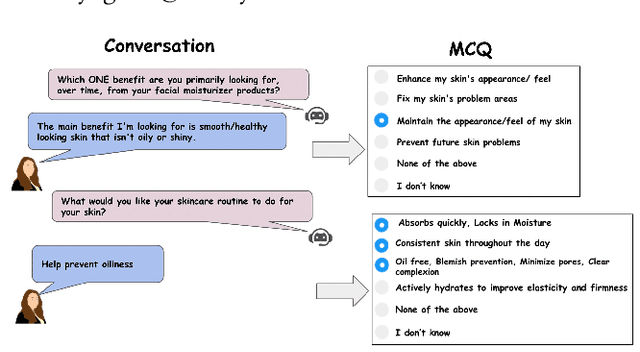

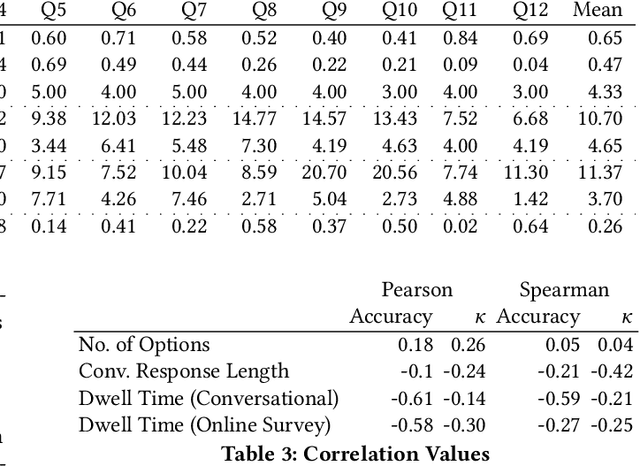
Abstract:Structured interviews are used in many settings, importantly in market research on topics such as brand perception, customer habits, or preferences, which are critical to product development, marketing, and e-commerce at large. Such interviews generally consist of a series of questions that are asked to a participant. These interviews are typically conducted by skilled interviewers, who interpret the responses from the participants and can adapt the interview accordingly. Using automated conversational agents to conduct such interviews would enable reaching a much larger and potentially more diverse group of participants than currently possible. However, the technical challenges involved in building such a conversational system are relatively unexplored. To learn more about these challenges, we convert a market research multiple-choice questionnaire to a conversational format and conduct a user study. We address the key task of conducting structured interviews, namely interpreting the participant's response, for example, by matching it to one or more predefined options. Our findings can be applied to improve response interpretation for the information elicitation phase of conversational recommender systems.
Is AI Art Another Industrial Revolution in the Making?
Jan 12, 2023Abstract:A major shift from skilled to unskilled workers was one of the many changes caused by the Industrial Revolution, when the switch to machines contributed to decline in the social and economic status of artisans, whose skills were dismembered into discrete actions by factory-line workers. We consider what may be an analogous computing technology: the recent introduction of AI-generated art software. AI art generators such as Dall-E and Midjourney can create fully rendered images based solely on a user's prompt, just at the click of a button. Some artists fear if the cheaper price and conveyor-belt speed that comes with AI-produced images is seen as an improvement to the current system, it may permanently change the way society values/views art and artists. In this article, we consider the implications that AI art generation introduces through a post-industrial revolution historical lens. We then reflect on the analogous issues that appear to arise as a result of the AI art revolution, and we conclude that the problems raised mirror those of industrialization, giving a vital glimpse into what may lie ahead.
GEMv2: Multilingual NLG Benchmarking in a Single Line of Code
Jun 24, 2022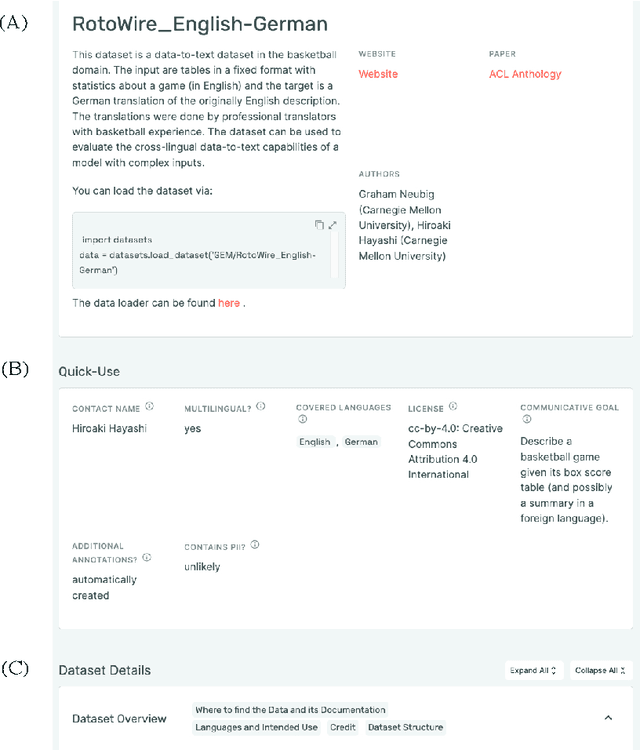
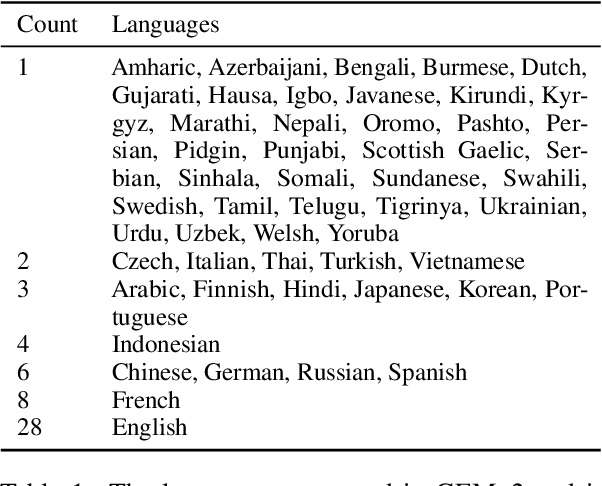
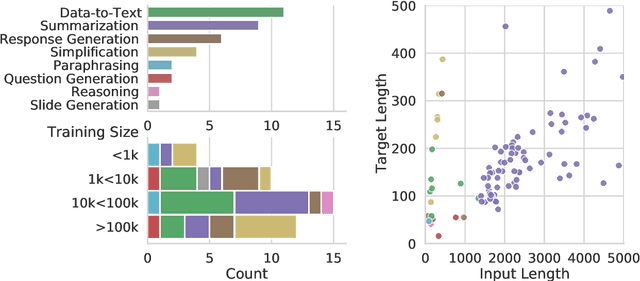
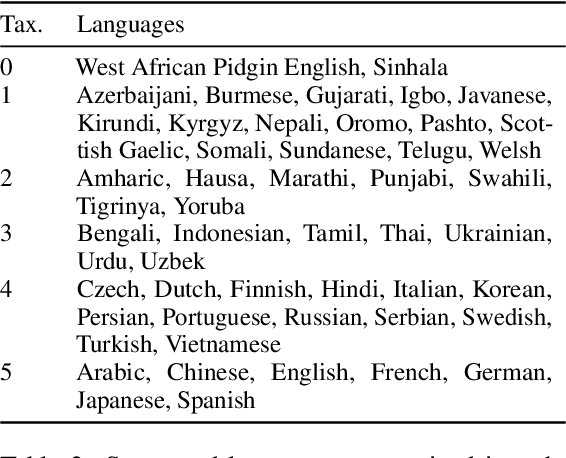
Abstract:Evaluation in machine learning is usually informed by past choices, for example which datasets or metrics to use. This standardization enables the comparison on equal footing using leaderboards, but the evaluation choices become sub-optimal as better alternatives arise. This problem is especially pertinent in natural language generation which requires ever-improving suites of datasets, metrics, and human evaluation to make definitive claims. To make following best model evaluation practices easier, we introduce GEMv2. The new version of the Generation, Evaluation, and Metrics Benchmark introduces a modular infrastructure for dataset, model, and metric developers to benefit from each others work. GEMv2 supports 40 documented datasets in 51 languages. Models for all datasets can be evaluated online and our interactive data card creation and rendering tools make it easier to add new datasets to the living benchmark.
Saying No is An Art: Contextualized Fallback Responses for Unanswerable Dialogue Queries
Dec 17, 2020



Abstract:Despite end-to-end neural systems making significant progress in the last decade for task-oriented as well as chit-chat based dialogue systems, most dialogue systems rely on hybrid approaches which use a combination of rule-based, retrieval and generative approaches for generating a set of ranked responses. Such dialogue systems need to rely on a fallback mechanism to respond to out-of-domain or novel user queries which are not answerable within the scope of the dialog system. While, dialog systems today rely on static and unnatural responses like "I don't know the answer to that question" or "I'm not sure about that", we design a neural approach which generates responses which are contextually aware with the user query as well as say no to the user. Such customized responses provide paraphrasing ability and contextualization as well as improve the interaction with the user and reduce dialogue monotonicity. Our simple approach makes use of rules over dependency parses and a text-to-text transformer fine-tuned on synthetic data of question-response pairs generating highly relevant, grammatical as well as diverse questions. We perform automatic and manual evaluations to demonstrate the efficacy of the system.
 Add to Chrome
Add to Chrome Add to Firefox
Add to Firefox Add to Edge
Add to Edge